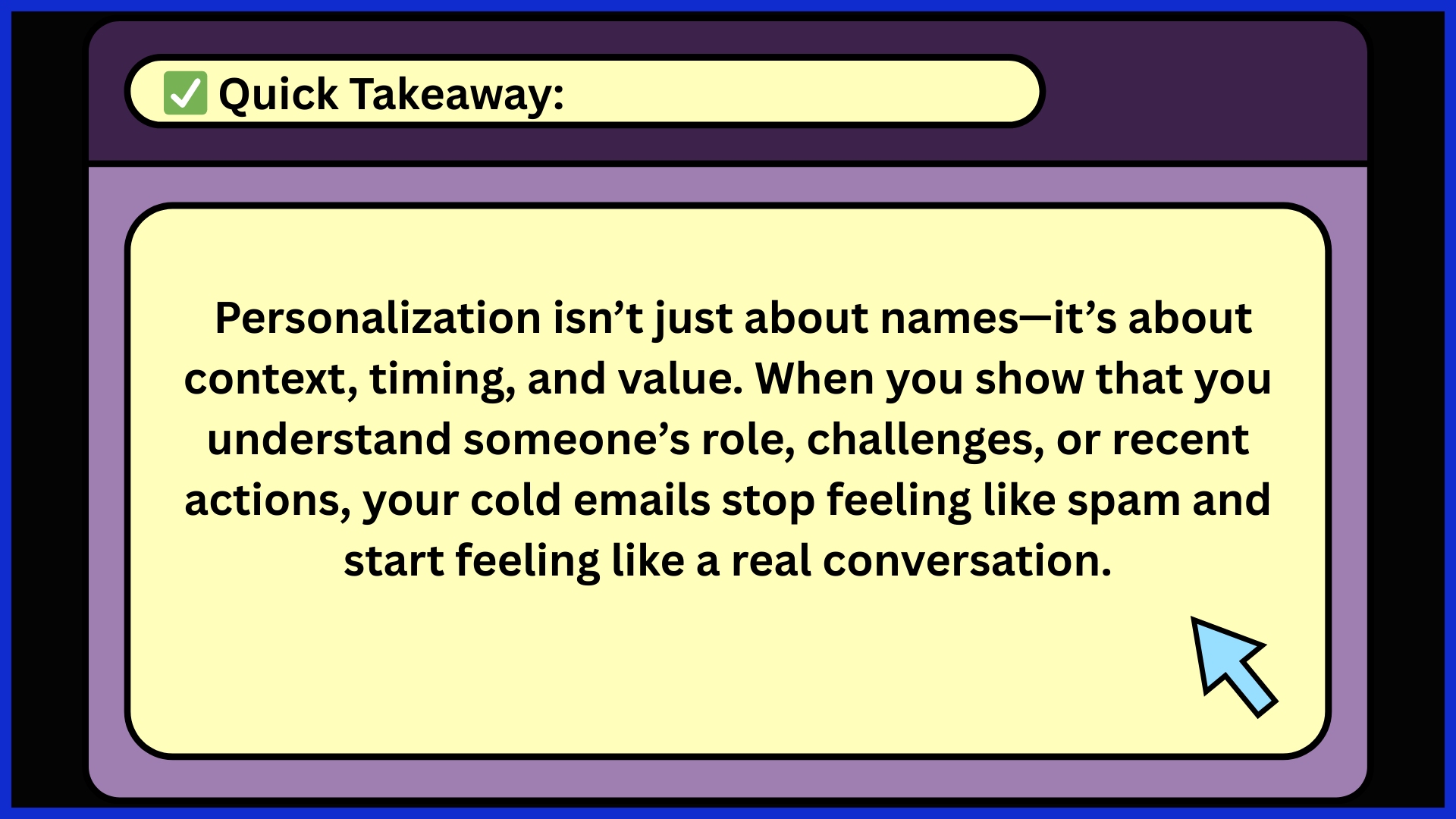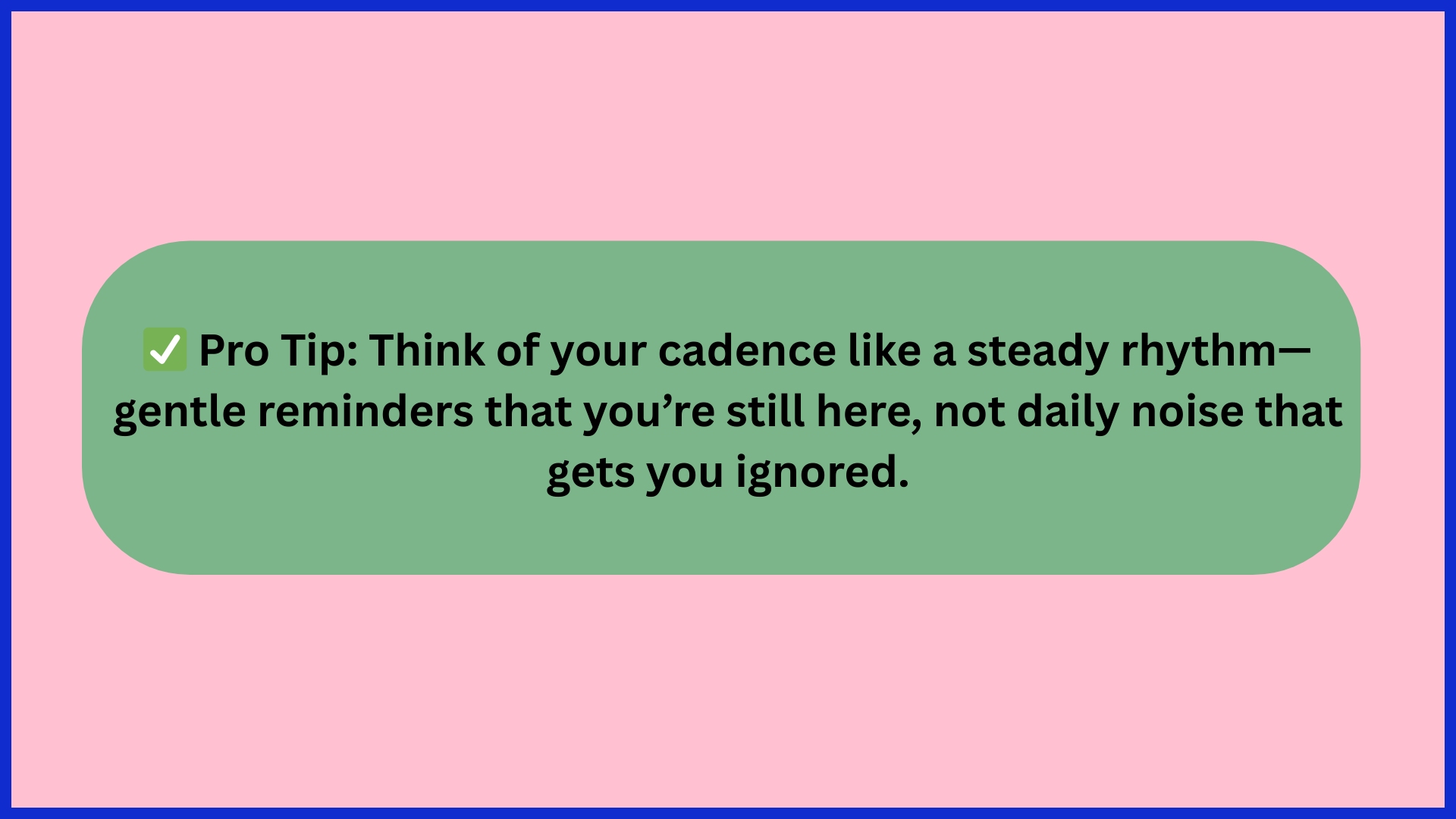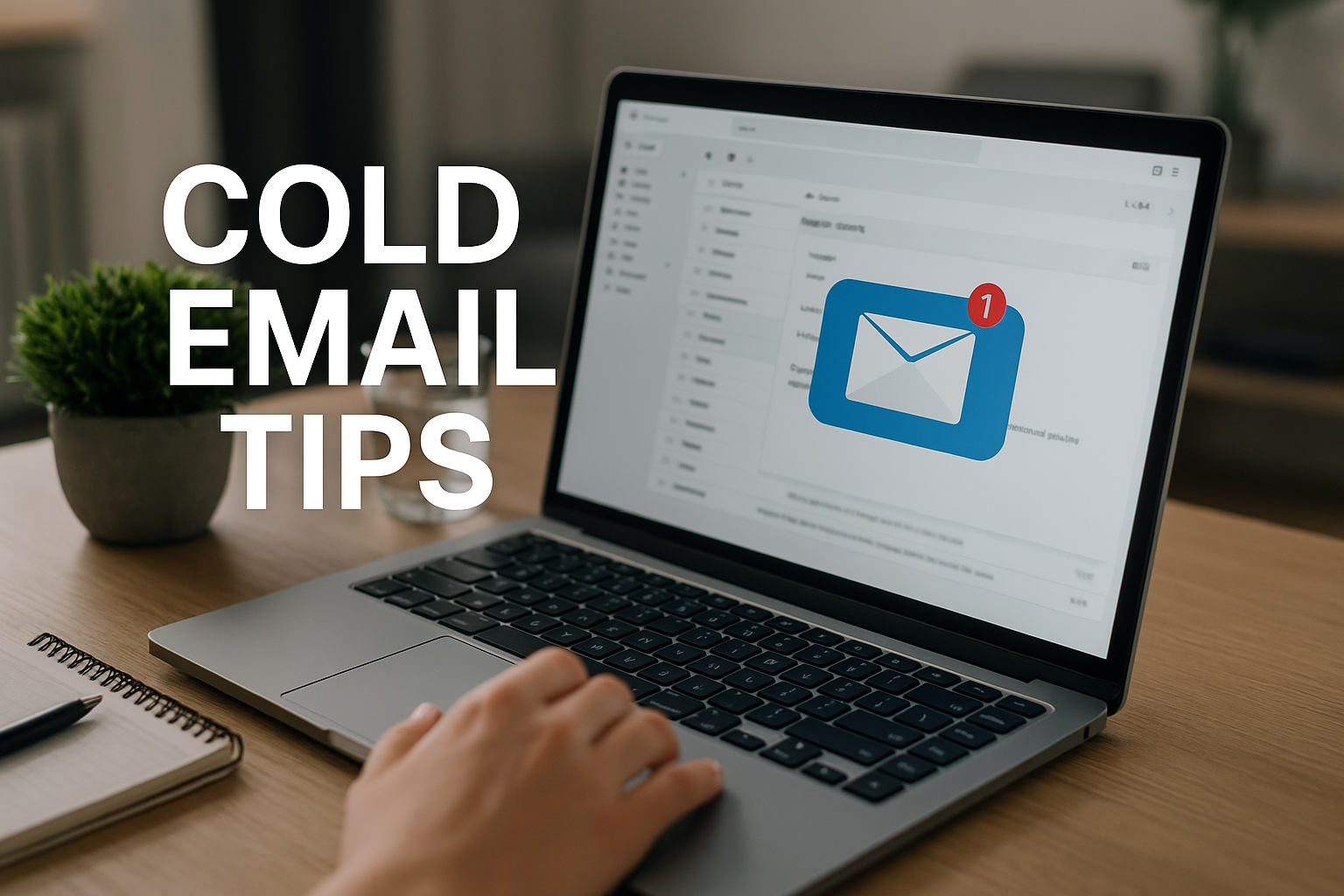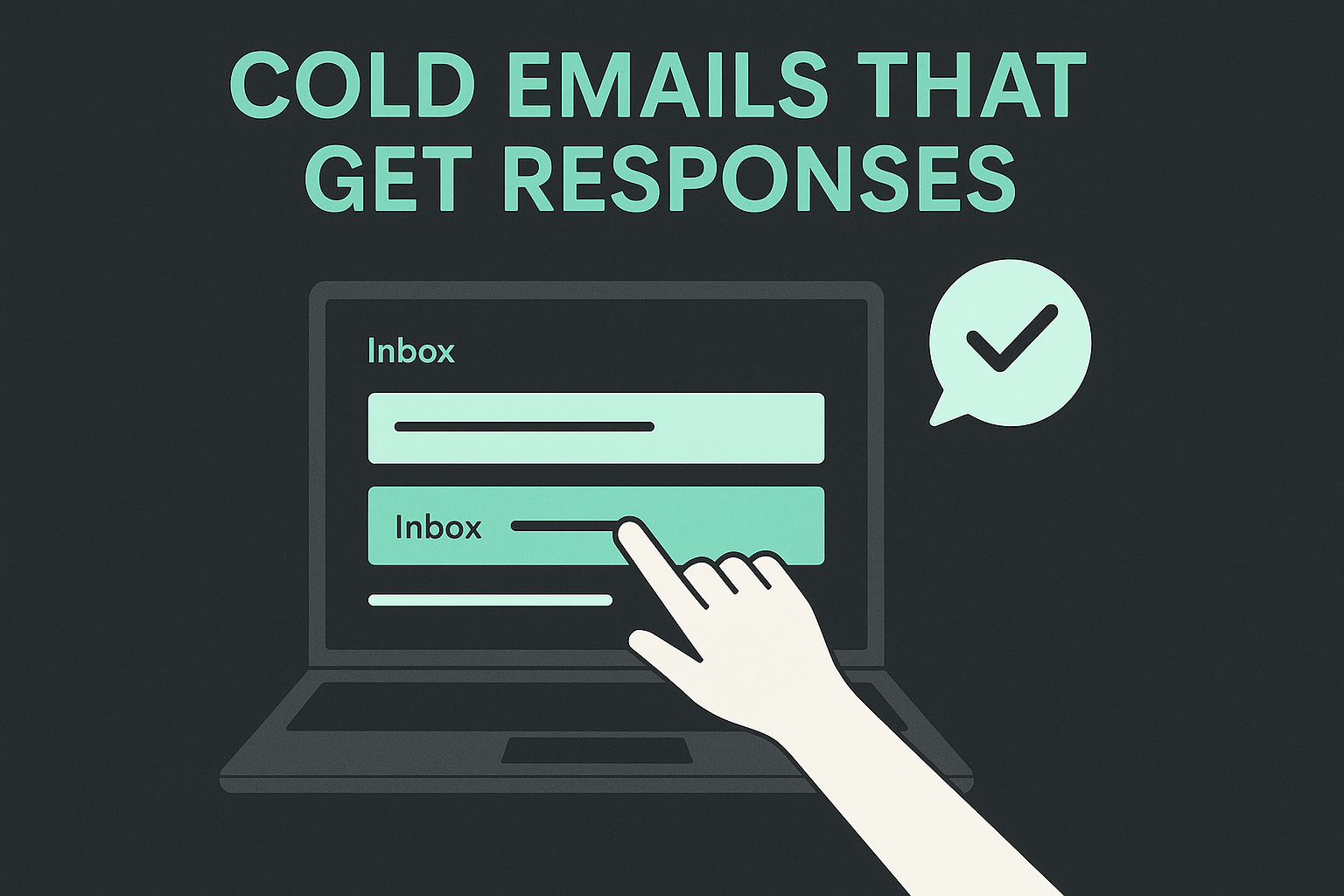The Essential Guide to Crafting Cold Emails That Get Responses
Key Takeaways
-
This means putting the recipient on the pedestal of your cold email.
-
Creating an effective subject line and opening sentence that draws the recipient’s attention is crucial.
-
Making emails personal beyond simply using the recipient’s name – i.e., using trigger-based or role-based references – makes outreach more applicable.
-
Smart follow-ups with a considerate cadence and clear context work best
-
Steering clear of canned templates, self-serving language, and vague asks establishes credibility and trust.
-
Regularly track some important metrics so you can keep improving and make sure your outreach stays efficient.
If you’ve ever struggled to write a cold email that actually gets opened and answered, you’re not alone. The good news is that it doesn’t have to feel complicated. With the right approach, you can send messages that are clear, polite, and impossible to ignore.
It all starts with the basics: strong subject lines, short and focused body text, and a simple call to action. Add a real name, keep your sentences crisp, and show proof of value—and suddenly your chances of getting a reply go way up.
Whether you’re reaching out for sales, partnerships, or hiring, these fundamentals apply to every context. In the next sections, you’ll find practical strategies and real examples you can use to craft cold emails that work.
The Recipient-First Mindset

The recipient-first mindset puts the person receiving your email at the center of your outreach strategy. Unlike the old days of blasting identical emails to huge lists, this approach is all about authenticity and relevance.
Here’s how it works:
-
Why it matters now
-
People receive hundreds of emails every day.
-
Their patience for unsolicited, copy-paste outreach is low.
-
What stands out are emails that are genuine and transparent about why you’re reaching out.
-
-
Understand who you’re emailing
-
Go beyond simply using their name.
-
Learn about their work, passions, and challenges.
-
Example: If you’re emailing a SaaS marketing manager, don’t just write, “I can help your business grow.”
-
Instead, reference a recent product launch they managed.
-
Or mention a shared industry challenge like tracking campaign results across multiple platforms.
-
-
-
Make the email about them
-
Cold email used to be a numbers game—focused on speed and scale.
-
Now, it’s about fit and value.
-
Recipients can quickly spot a generic email. They’re more willing to respond if they feel you’ve taken time to understand their needs.
-
-
Show value early
-
Your value should be clear in the first few lines.
-
Example: Call out pain points like:
-
Spending hours on manual reports
-
Needing better ways to share data with teammates
-
-
When readers see that you understand their problems, they’re more likely to view you as helpful—not just another salesperson.
-
-
Be specific, not generic
-
If your email could be sent to anyone, it won’t resonate with anyone.
-
Example: Writing to a digital agency? Show how your solution:
-
Saves time on repetitive tasks
-
Integrates with tools they already use
-
-
-
Build trust through empathy
-
Demonstrate you know their world and want to assist—not just pitch.
-
This creates trust, increases replies, and leads to better results than sending hundreds of generic emails.
-
Essential Cold Email Tips
Cold email works best when it’s considerate, personal, and focused on delivering value. Every detail matters — from the subject line to your signature.
Here’s how to get it right:
1. The Subject Line

Think of your subject line as the cover of a book. If it doesn’t catch attention, the rest won’t be read.
-
Keep it short and clear. Avoid spammy words like “urgent,” “limited time,” or “act now.”
-
Hint at value. Give them a reason to click.
-
Example: “Quick research on SaaS churn rates”
-
Example: “Report: [Recipient’s Company] in 2024”
-
-
Make it relevant. Tie it to something happening in their world — like a recent launch, news mention, or industry shift.
2. The Opening Line

Your first line sets the tone. Skip the bland “Dear Sir/Madam.” Instead, show you know who you’re talking to.
-
Personalize it. Reference something specific about them.
-
Example: “I enjoyed your article on sustainable design, especially your approach to material sourcing.”
-
-
Build trust. Mention a mutual connection or shared interest if you have one.
This small effort proves you’ve done your research — not just blasting out a template.
3. The Body Copy

Keep your message short, clear, and easy to scan. Aim for under 150 words.
-
Get to the point fast. Why are you reaching out, and why them specifically?
-
Offer value first. Share a useful insight, resource, or observation.
-
Example: “We just released a study on campaign tracking across multiple platforms. Thought you’d find the benchmarks helpful.”
-
-
Avoid generic pitches. Don’t just say “I can help your business grow.” Make it about their pain points and goals.
-
Be specific if you request something. Explain what you want and why it matters to them.
4. The Call-to-Action

Every cold email should end with a clear, simple next step. Don’t overwhelm the reader with choices.
-
Keep it low-stakes. Make it easy to say yes.
-
Example: “Would you like me to send over the full report?”
-
Example: “Is this something worth a quick chat next week?”
-
-
One CTA only. Multiple requests confuse people and kill action.
5. The Signature

Your sign-off is where you reinforce who you are and why you’re credible.
-
Use your full name, role, and company.
-
Add one helpful link (website or LinkedIn) for context.
-
Keep it clean — avoid distracting quotes, emojis, or oversized graphics.
A simple, professional signature signals that you’re a real person, not just another spammer.
Personalization Beyond [Name]

Cold email personalization is more than dropping someone’s first name into a template. True personalization means tailoring your message to their situation, role, and context. When readers feel recognized—not marketed to—they’re far more likely to respond.
From the subject line to the P.S., small details can show that you’ve done your homework. Even referencing their location, job change, or a recent event can spark interest and keep them engaged.
Trigger-Based
Trigger-based personalization uses real events or actions to shape your email.
Examples:
-
Following up after someone downloads a whitepaper.
-
Reaching out when they attend a webinar or change jobs.
-
Referencing a recent move: “Saw you joined the Paris office—welcome!”
Why it works:
-
It’s tied to what they’re actually doing, not just who they are.
-
Automated tools can track these triggers in real time, helping you respond quickly.
-
A trigger-based subject line feels more relevant than a generic “Hi there.”
Value-Driven
Instead of focusing on your product, highlight the value to them.
Ways to do this:
-
Mention a challenge in their company or industry.
-
Share a short case study of how a similar business saw results.
-
Add a casual but thoughtful P.S.:
-
“P.S. If you’re curious, I can send over examples from your area.”
-
Why it works:
-
It shows you’ve done your research.
-
The message feels helpful, not salesy.
-
Recipients trust you more because you’re speaking to their real needs.
Role-Specific
Different roles care about different outcomes. Tailor your message to match.
Examples:
-
A marketing manager cares about campaign analytics.
-
A finance leader focuses on cost savings.
-
An HR director might value tools that improve team efficiency.
How to use it:
-
Write subject lines that speak directly to their role.
-
“Quick tip for HR leaders”
-
“Reducing reporting time for marketing teams”
-
-
Reference a recent team win or achievement in your opening line.
-
Use dynamic content tools to swap out text or links by job function.
Why it works:
-
It feels like the email was written specifically for them.
-
Even at scale, the tone stays fresh, personal, and respectful.

The Art of Following Up
Following up is just as important as the first cold email you send. Many people stop too soon—most marketers quit after one or two emails. But studies show it takes an average of eight attempts to make contact with a potential customer.
The key is persistence with respect and value. Every follow-up should feel helpful, not annoying.
Cadence
1. Cadence: Timing Your Follow-Ups
How often and when you follow up can make or break your outreach.
-
Don’t quit early. 44% of salespeople give up after just one follow-up, even though response rates can increase by 65.8% with a well-timed second attempt.
-
First follow-up: Send it 3–5 days after your initial email. This reminds them without being pushy.
-
Best days/times: Tuesdays and Thursdays, between 9 AM–12 PM (recipient’s time), often yield higher open rates.
-
Spacing matters. Give a few days between follow-ups instead of sending daily nudges. This shows respect for their inbox and builds a sense of consistency.

Context
The worst follow-up you can send? “Just checking in.”
Instead, make every follow-up feel fresh and relevant:
-
Highlight a new benefit of your offer.
-
Personalize with context:
-
Example: “Congrats on your company’s recent expansion into Europe—I’d love to share how our platform helps teams manage global transitions.”
-
-
Build on earlier conversations:
-
If your first email mentioned a demo, follow up by asking: “Is there a good time next week to walk you through it?”
-
Each follow-up should move the conversation forward. That way, you avoid sounding repetitive while showing genuine interest in their needs.
Closure
After a few follow-ups, it’s time to wrap things up with a polite “break-up email.”
-
Acknowledge their silence, but leave the door open:
-
Example: “If now isn’t the right time, I’ll step back—but feel free to reach out if things change.”
-
-
Why this works:
-
It’s respectful.
-
It clears their inbox.
-
It leaves you looking professional, not pushy.
-
Sometimes this type of email even prompts a last-minute reply from someone who’s been undecided.

Avoid Common Pitfalls
Cold emails work best when they feel authentic, relevant, and respectful. But a few common mistakes can tank your response rates—or worse, land you in the spam folder. Here’s what to avoid and how to fix it.
Generic Templates
Sending the same cookie-cutter email to everyone is a surefire way to get ignored.
-
The problem: People can spot a mass email instantly. Phrases like “Dear Sir or Madam” scream “spam.”
-
Why it fails: Off-the-shelf templates don’t inspire trust. Recipients can smell canned messages a mile away.
-
The fix: Personalize your email. Use their name and reference something specific about their business or work.
-
Example: Instead of “I enjoyed your recent article,” try “Your article on digital privacy in [Publication] caught my attention—especially your take on consumer trust.”
-

Self-Centered Language
Nobody wants to read an email that sounds like a commercial.
-
The problem: Lines like “We’re best in class” or “Our world-class team” mean nothing to the recipient.
-
Why it fails: The email becomes about you, not them.
-
The fix: Flip the focus. Show how your solution eases their pain or saves them time.
-
Example: Instead of “Our product is award-winning,” say “Teams like yours cut reporting time in half with our tool.”
-

Vague Requests
A cold email with a fuzzy ask goes nowhere.
-
The problem: Lines like “Let me know if you’re interested” or “Love to connect” don’t give a clear next step.
-
The fix: Be polite but specific with your call-to-action (CTA).
-
Example: “Would you be open to a 15-minute call next week to walk through your current workflow?”
-
-
Subject lines matter too. Avoid vague lines like “Quick hello.” Instead, use something direct like “Quick question about your marketing strategy.”

Conclusion
A great cold email gets straight to the point. Write for the reader, not yourself. Keep it short, add a personal touch, and skip the fluff. Use clear words, direct asks, and back it up with real data.
Think of cold email as a process, not a one-shot attempt. Test different approaches, track your results, and refine as you go. The emails that win aren’t the slick, over-polished pitches—they’re the quick, sincere notes that show you understand the recipient’s world.
At the end of the day, people don’t want long stories. They want solutions, relevance, and respect. Put yourself in their shoes, and that’s where authentic trust begins.
Want more ways to boost replies and open rates? Head over to KPI.me for fresh tactics and simple tools to measure what really matters—and start seeing better results in your next batch of emails.
Frequently Asked Questions
What is the recipient-first mindset in cold emailing?
The recipient-first mindset in your cold email introduction is all about the individual on the other end of your email. Make your message about them — deliver value, ensuring it is relevant.
How can I personalize cold emails beyond using someone’s name?
Make your cold outreach email personal by referring to something specific about the recipient’s work, accomplishments, or pain points. This approach fosters trust and a strong connection.
How many follow-up emails should I send after the first cold email?
Shoot one or two follow-up cold outreach emails if you don’t hear back. Space them a few days between, ensuring each cold email intro is courteous and demonstrates sustained worth.
What are some common mistakes to avoid in cold emailing?
Avoid sending generic messages in your cold outreach email; instead, research your recipient to create personalized emails that foster genuine connections.
How do I measure the success of my cold email campaigns?
Track key metrics such as open rates, response rates, and conversions in your cold outreach emails. Analyzing these helps you see what works and refine your cold email strategy.
Why is personalization important in cold emails?
Personalization in your cold email intro gets you a higher response rate, showing you value the potential customer and are not just spamming.
What should I include in every cold email?
Use a strong subject line for your cold email introduction, include a brief note with a personal touch, and ensure a clear call to action.


